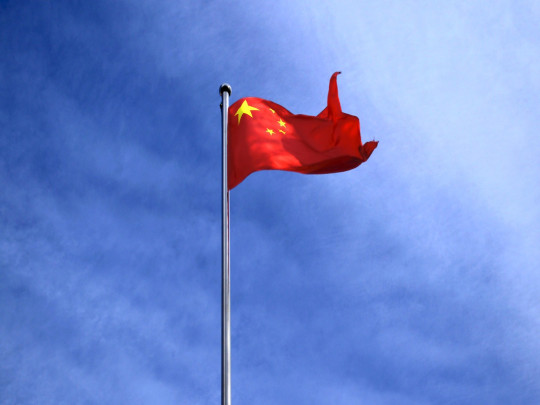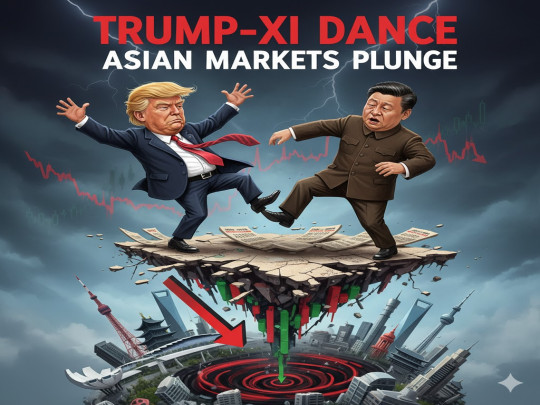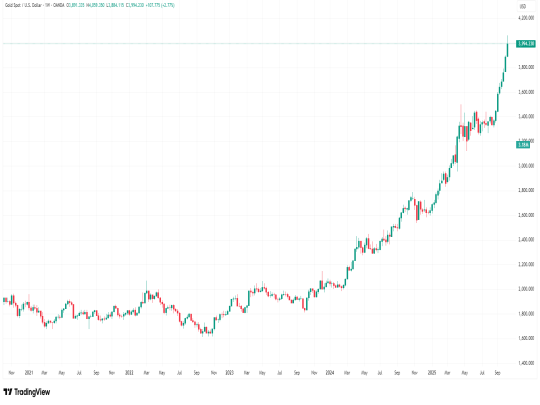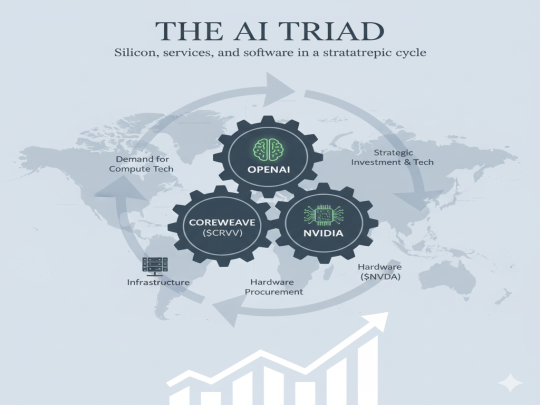China’s Rare-Earth Clampdown
Beijing has dramatically expanded export controls on rare-earth elements (REEs), processing technologies and downstream products. The move immediately jolted markets and stocks — Chinese producers rose, U.S. and allied critical-minerals names rallied — and has forced a strategic re-think across the global supply chain. For industry participants — miners, processors, magnet makers, OEMs in the EV/wind/aerospace sectors, recyclers and equipment suppliers — the implications are profound: a rush to onshore capability, a likely multi-year investment cycle, shifts in trade patterns, and a new premium on technical know-how, traceability and environmental compliance.

China’s Ministry of Commerce broadened its export-control list to include five additional rare-earth elements (holmium, erbium, thulium, europium and ytterbium) and added dozens of processing and magnet-manufacturing technologies to its restricted list. Under the new rules, foreign firms exporting magnets or equipment that contain even trace amounts of China-origin heavy rare earths — or that were made using Chinese extraction/refining technologies — will need a Chinese export licence. Implementation is phased: many measures take effect on November 8, while rules applying to products made overseas with Chinese material or technology come into force on December 1.
The stated rationale from Beijing is national security: the ministry said the measures aim to “protect national security and interests” and to prevent the “misuse of rare earth materials in military and other sensitive sectors.” But the move is also clearly strategic — timed in the run-up to a high-profile Xi-Trump meeting — and it mirrors the U.S. use of export-controls to constrain Chinese access to cutting-edge chips and equipment.
Why this is a big deal (and not just political theatre)
Rare earths are essential to multiple high-tech value chains: permanent magnets (neodymium, praseodymium, dysprosium, terbium) power EV motors and wind turbines; europium and erbium support specialized optics and electronics; other elements are used in semiconductor, defense and aerospace components. Critically, while ore deposits exist globally, separation, refining and magnet manufacture are highly concentrated in China — a structural chokepoint that Beijing can now regulate more aggressively. Analysts estimate China controls the vast majority of processing capacity and magnet production, giving it leverage far more potent than raw-ore share alone.
What people on both sides are saying
“This is to raise the stakes and demonstrate China has leverage and cards to play,” said Dylan Loh, an associate professor at Nanyang Technological University, capturing the geopolitical calculus behind the timing.
Gracelin Baskaran of the Center for Strategic and International Studies called the measures “strategic,” arguing China has effectively placed new negotiation pawns on the table ahead of summit talks.
“It’s a systematic, comprehensive response to the US,” said Dai Menghao, a trade-compliance partner at King & Wood Mallesons, while former State Department official Chris McGuire warned that enforcement remains uncertain — and risky for China — because the U.S. “has the ability to counterpunch hard.”
Neha Mukherjee of Benchmark Mineral Intelligence warned the world is “likely entering a period of structural bifurcation — with China localizing its value chain and the U.S. and allies accelerating their own.”
On the industry side, MP Materials — the largest U.S. rare-earth miner that has already received government backing — said the rules “reinforce the need for forward-leaning U.S. industrial policy” and called supply-chain resilience a matter of both economic and national security. USA Rare Earth’s CEO Barbara Humpton told media “it’s going to take a lot of players to build out this marketplace.”
Market reaction — how stocks moved on the news
The response was immediate and directional: shares of Chinese state groups that dominate domestic rare-earth production jumped sharply on the prospect of tighter control, while a wide swath of U.S. and allied critical-minerals firms rallied on investor expectations of accelerated government support and onshoring.
Notable moves (intraday on announcement): China Northern Rare Earth rose ~10% in Shanghai; Rising Nonferrous Metals and Shenghe Resources climbed roughly 6–10%. On U.S. exchanges, smaller domestic miners and processors saw strong gains: USA Rare Earth surged ≈15%, NioCorp +≈12%, Ramaco Resources +≈11%, Energy Fuels +≈9% and MP Materials +≈2–3%. Larger diversified names tied to battery or critical-minerals supply chains — Albemarle, Lithium Americas and Trilogy Metals — also posted modest advances. Markets that had previously diversified processing outside China, most obviously Lynas, jumped as investors priced geopolitical premium into non-Chinese capacity.
How governments are likely to respond (and why that matters for investors)
The clampdown increases the political urgency in Washington, Brussels, Tokyo and Canberra to accelerate subsidies, loan guarantees and strategic purchases that support domestic separation and magnet capacity. The U.S. has already taken early steps — equity stakes and strategic deals with domestic firms — and analysts expect more targeted industrial policy funding, prioritized permitting and procurement commitments that materially change project economics. But these actions take time: processing plants and magnet factories are capital-intensive, environmentally sensitive and technically demanding.
The timeline for meaningful replacement capacity is therefore measured in years, not weeks. That creates a multi-year structural trade for investors who can tolerate the execution risk — but it also means headline rallies can reverse quickly if political signals fade or Beijing’s enforcement proves limited.
What this means for the industry — the big structural effects
1. Acceleration of onshoring and “de-risking” strategies
The policy crystallizes what many supply-chain managers already feared: processing and high-value manufacturing can be constrained by geopolitical decisions. Expect governments (U.S., EU, Japan, Australia) to accelerate subsidies, loan programs, strategic procurement and fast-track permitting to build separation, refining and magnet-making capacity domestically or among trusted allies. That will reshape capital flows: more public and private capital toward processing plants, downstream factories and recycling infrastructure — but not overnight. Building full processing lines and magnet fabs takes years, so the industry faces a multi-year transition window where demand and price dynamics will be volatile.
2. Vertical stratification and winners vs. losers
Not every miner benefits equally. Mining is the first step; the real moat tomorrow will be companies that can process, refine and manufacture magnets or those that own proprietary separation or recycling technology. Firms that can sell not only ore but also downstream capability (or that form credible offtake and processing partnerships) will become preferred partners for OEMs and governments. Conversely, juniors with only ore assets and weak financing will be vulnerable to headline-driven enthusiasm followed by funding droughts.
3. Rush for technical know-how, licensing and equipment
Because China’s control extends to equipment and technologies, nations and firms will invest heavily in R&D, licensing alternatives and equipment supply chains. This opens an industry opportunity for equipment manufacturers (separation columns, hydrometallurgical systems, magnet sintering equipment, recycling technology). Companies that can supply turn-key processing trains or licensed proprietary processes will capture premium margins.
4. Growth of recycling and circular supply chains
One durable supply response to geopolitical constraints is recycling. Urban mining — recovering REEs from magnets, electronics, and industrial scrap — becomes an economic and strategic priority. Recycling reduces dependence on raw ore imports and shortens the supply chain. Expect investment in automated disassembly, magnet-separation, and hydromet flowsheets optimized for secondary feedstocks. Recycling’s rise will change industry economics and create new service and equipment niches.
5. OEM and downstream adjustments (EVs, wind, aerospace, defence)
Original equipment manufacturers will react on multiple fronts: design substitutions (reducing reliance on scarce heavy REEs), increased inventory and dual-sourcing strategies, and long-term contracts with processing partners. EV and wind-turbine makers may accelerate alternative motor designs or substitute materials where possible; defense contractors will lobby for assured supply lines and strategic stockpiles. The net effect will be more localized supply chains and higher emphasis on qualifying trusted suppliers.
Bottom line
China’s October 2025 export controls mark a deliberate escalation in how a major state uses industrial policy and export rules as geopolitical leverage. The near-term market impact was dramatic: Chinese state producers rose on the prospect of protected domestic demand while a broad set of U.S. and allied miners and processors jumped on the increased odds of industrial policy support. For patient U.S. retail investors the story offers a genuine structural opportunity — diversifying critical-minerals supply off China — but it is littered with operational, regulatory and geopolitical landmines. Diligence, realistic timelines and conservative position sizing are essential: the policy lever has been pulled, but the work of actually building a resilient alternative supply chain is still only beginning.


